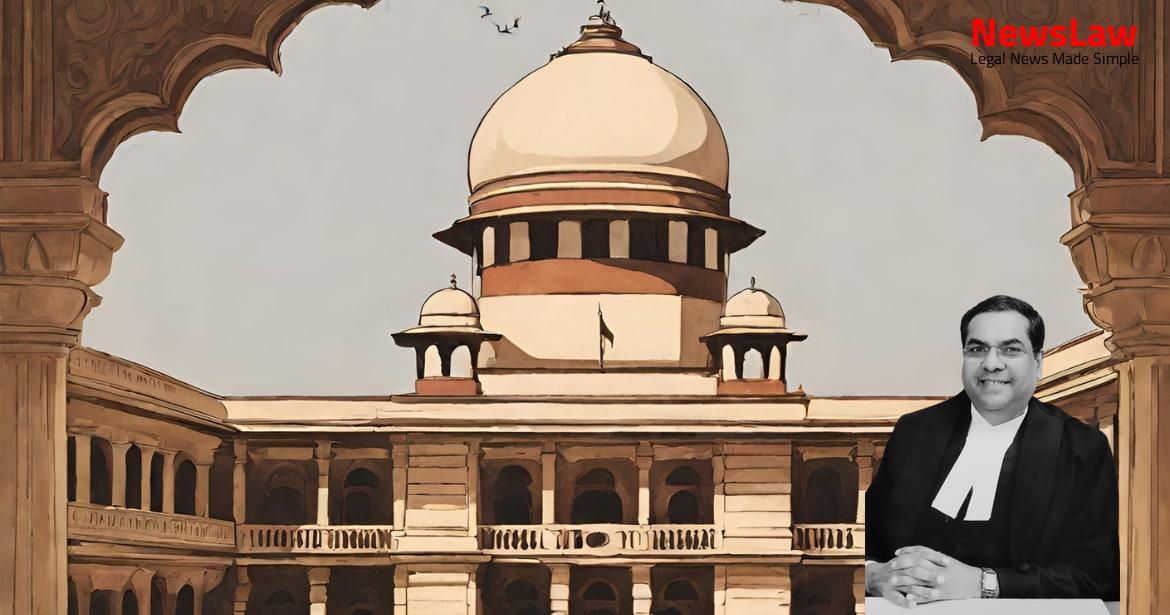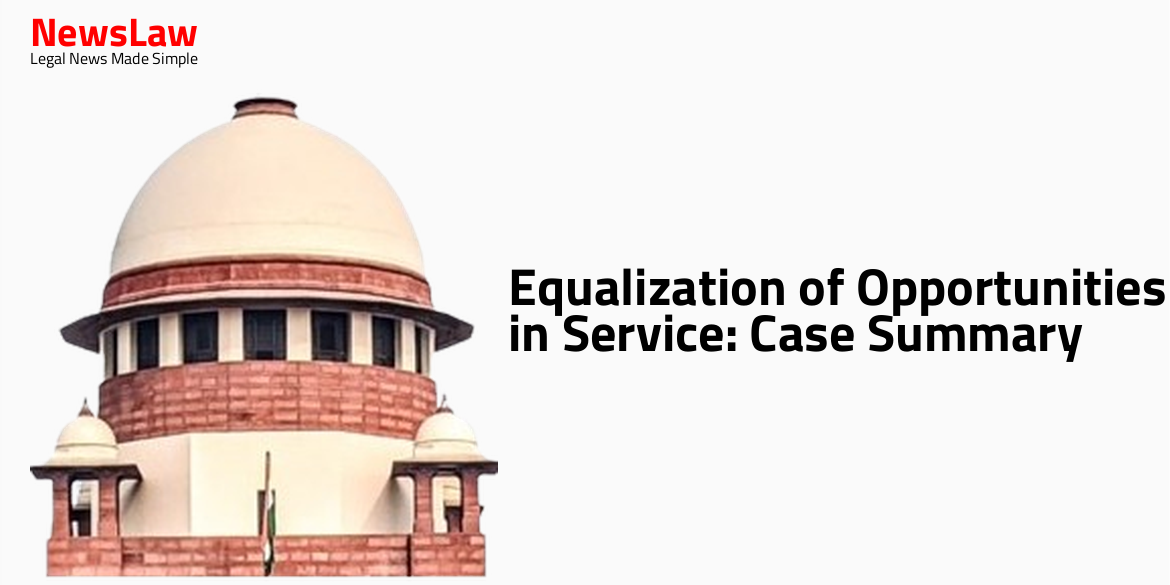The legal analysis carried out by the High Court and Tribunal in a case revolving around railway employment schemes has shed light on important principles of equal opportunity and the elimination of monopoly in public employment. The Court’s scrutiny of the validity and implications of the schemes has led to significant judgments and directions for the railway authorities. Let’s delve deeper into the legal intricacies and complexities surrounding this case.
Facts
- In a case involving a petition before the High Court under Article 226 of the Constitution, the Court observed that since the scheme in question had been terminated, no further action was necessary.
- The High Court directed the railway authorities to revisit the validity of the scheme before making any appointments, emphasizing the principles of equal opportunity and the elimination of monopoly in public employment.
- A conscious decision was taken by the Union of India to terminate the scheme, as noted in a judgment of a three-judge Bench of the Court in a separate case.
- The Tribunal directed the Railways to consider the respondent for a post according to his medical fitness in the relevant categories.
- Multiple appeals and judgments from the High Court and Tribunal have contributed to the complexity of the case surrounding the LARSGESS scheme.
- The Railway Board introduced a scheme called Safety Related Retirement Scheme in 2004 for Gangmen and Drivers.
- The scheme allowed voluntary retirement for employees aged 55-57 with 33 years of service.
- Employees could seek retirement once a year with specific eligibility criteria determined by a cut-off date.
- Wards of retiring employees could only be considered for employment in the same category as the retiring employee.
- The Railway Board extended the scheme to other safety staff with a grade pay of Rs. 1800 per month in 2010.
- The scheme underwent modifications in 2014, reducing the qualifying service period to 20 years and the age group for retirement eligibility to 50-57 years.
- A High Court decision in 2016 directed the railway authorities to ensure equal opportunity and elimination of monopoly in appointments under the scheme.
- A subsequent decision in 2019 addressed the appointment of wards under the scheme with regard to formalities completed before October 27, 2017.
Also Read: Electoral Malpractices in Mayor Election
Analysis
- The Tribunal rejected the application of the respondent based on age criteria as per the scheme.
- The respondent’s father superannuated on specific dates mentioned, leading to the rejection of the applications.
- Errors in the dates of birth were noted in applications, leading to discrepancies in eligibility.
- Various applications were submitted at different times, impacting the eligibility criteria.
- The High Court and Tribunal had differing views on eligibility based on application dates.
- The notification issued by the Ministry of Railways in 2011 regarding recruitment schedules and criteria.
- The Tribunal dismissed the respondent’s case citing doubts on scheme’s validity and father’s retirement age.
- The second application of the respondent was filed later and did not meet the age criteria.
- Details regarding extension of scheme benefits and its application process were outlined.
- Conditions for appointment under LARSGESS scheme were specified concerning voluntary retirement before a specific date.
- The Tribunal’s judgment was found to be error-free.
- There were no mistakes in the judgment of the Tribunal.
- Upon careful consideration, it was determined that the Tribunal’s decision was accurate.
- The LARSGESS scheme allowed for backdoor entry into service, going against the mandate of Article 16 for equal opportunity in public employment.
- The Division Bench of the Punjab and Haryana High Court in Kala Singh doubted the validity of the LARSGESS scheme, leading to its termination by the Union government.
- The three judge Bench in Manjit also criticized the scheme for providing avenues for backdoor entry and being contradictory to Article 16.
- The High Court of Madras issued a mandamus for the appointment of the respondent in contrast to the concerns raised about the LARSGESS scheme.
Also Read: Balancing Power and Transparency: Electoral Bonds Struck Down, Disclosure Mandated
Decision
- The appeals have been allowed and the judgments of the Madurai Bench of the Madras High Court dated 21 March 2018 and 3 September 2019 have been set aside.
- There will be no orders as to costs.
- Any pending application(s) have been disposed of.
- The writ petitions filed by the respondents before the High Court have been dismissed.
Also Read: Recall of Resolution Plan Approval: Legal Analysis
Case Title: THE CHIEF PERSONNEL OFFICER Vs. A NISHANTH GEROGE (2022 INSC 92)
Case Number: C.A. No.-000294-000294 / 2022



